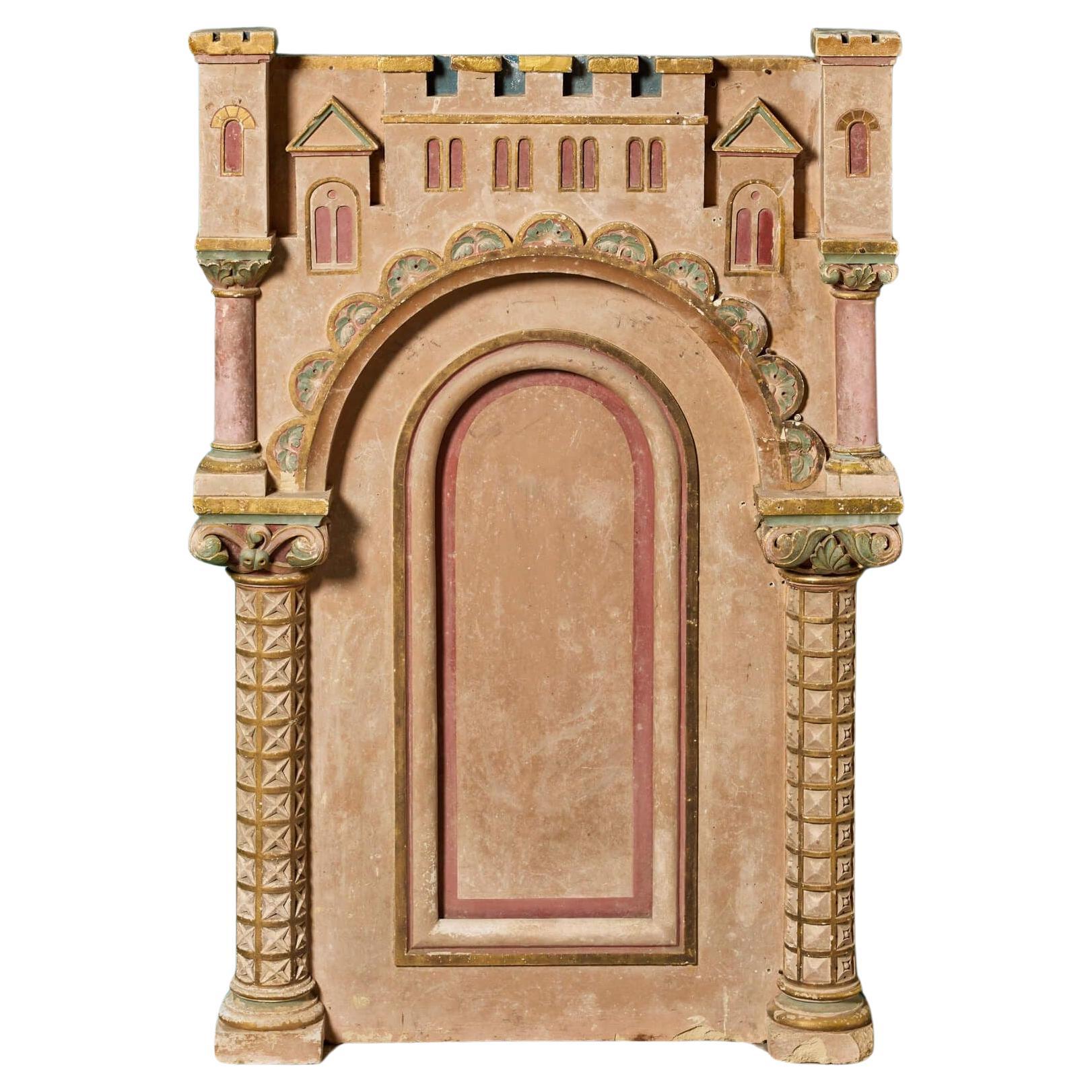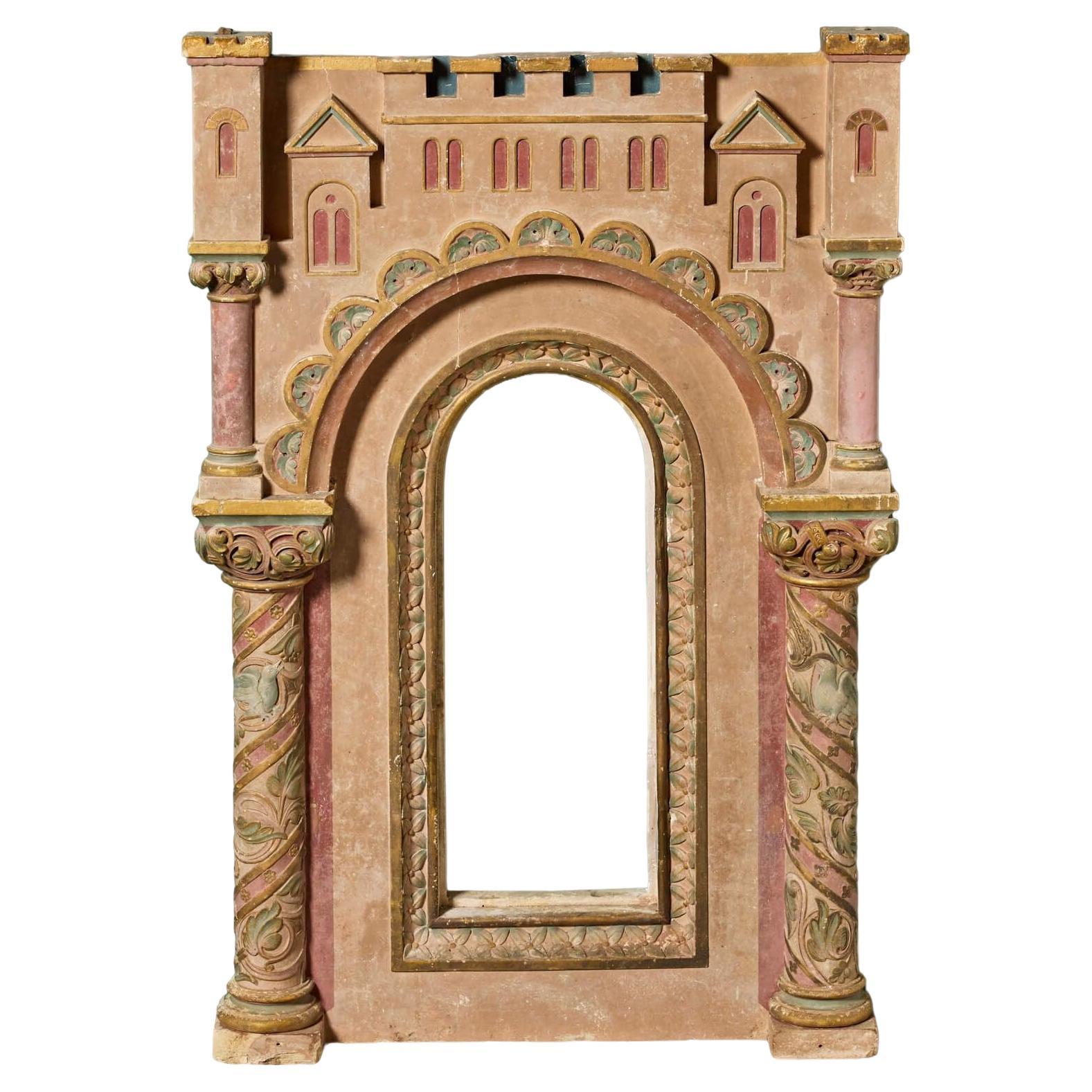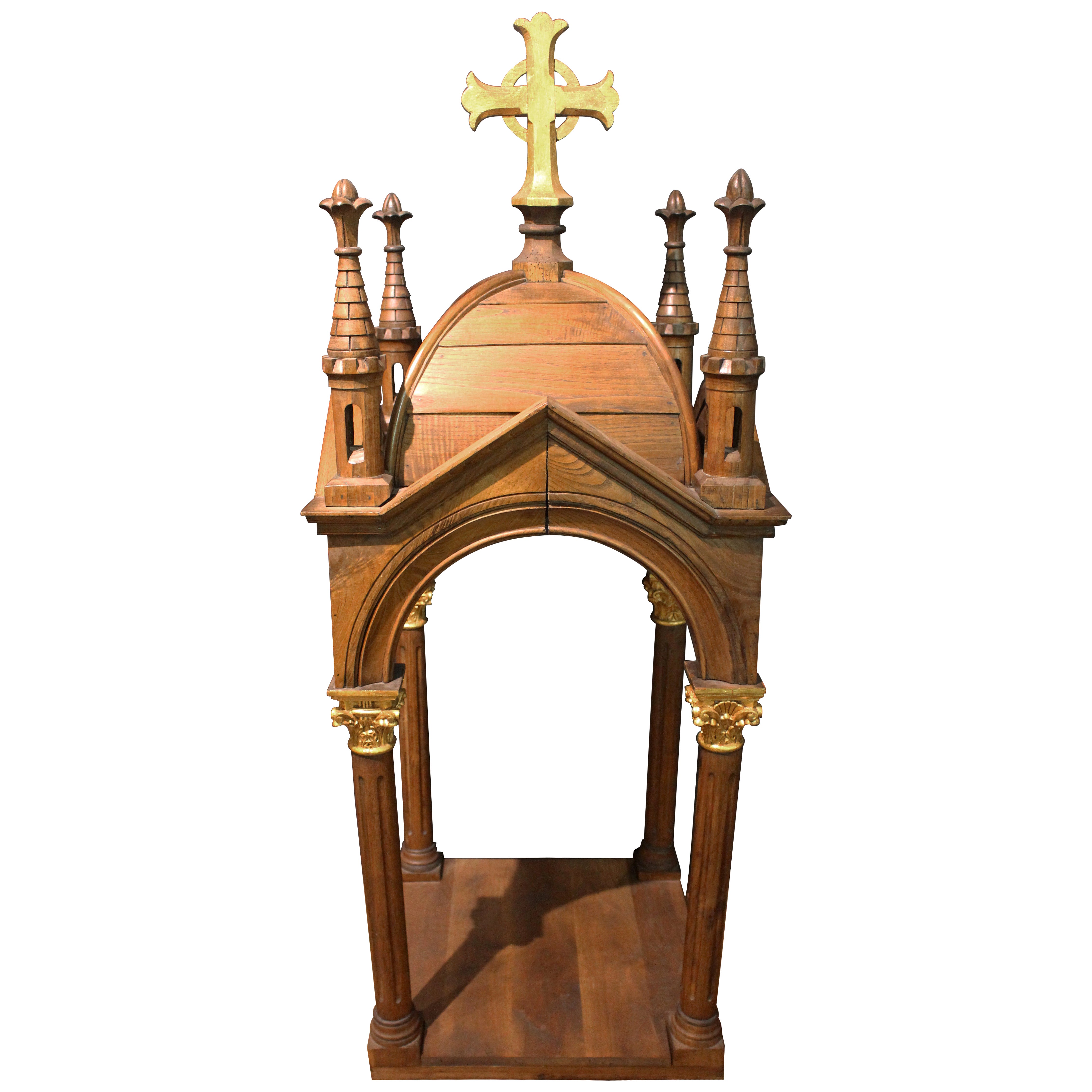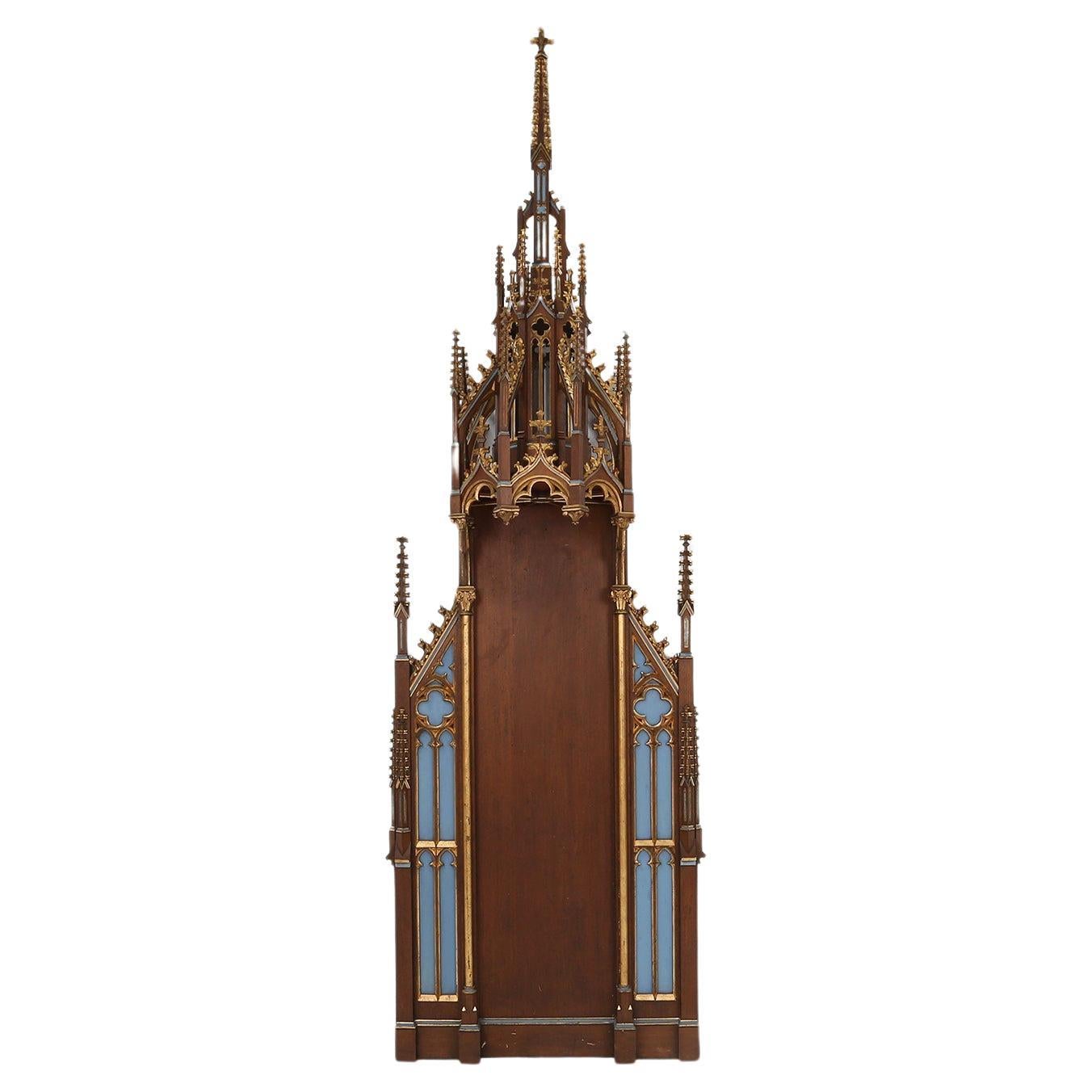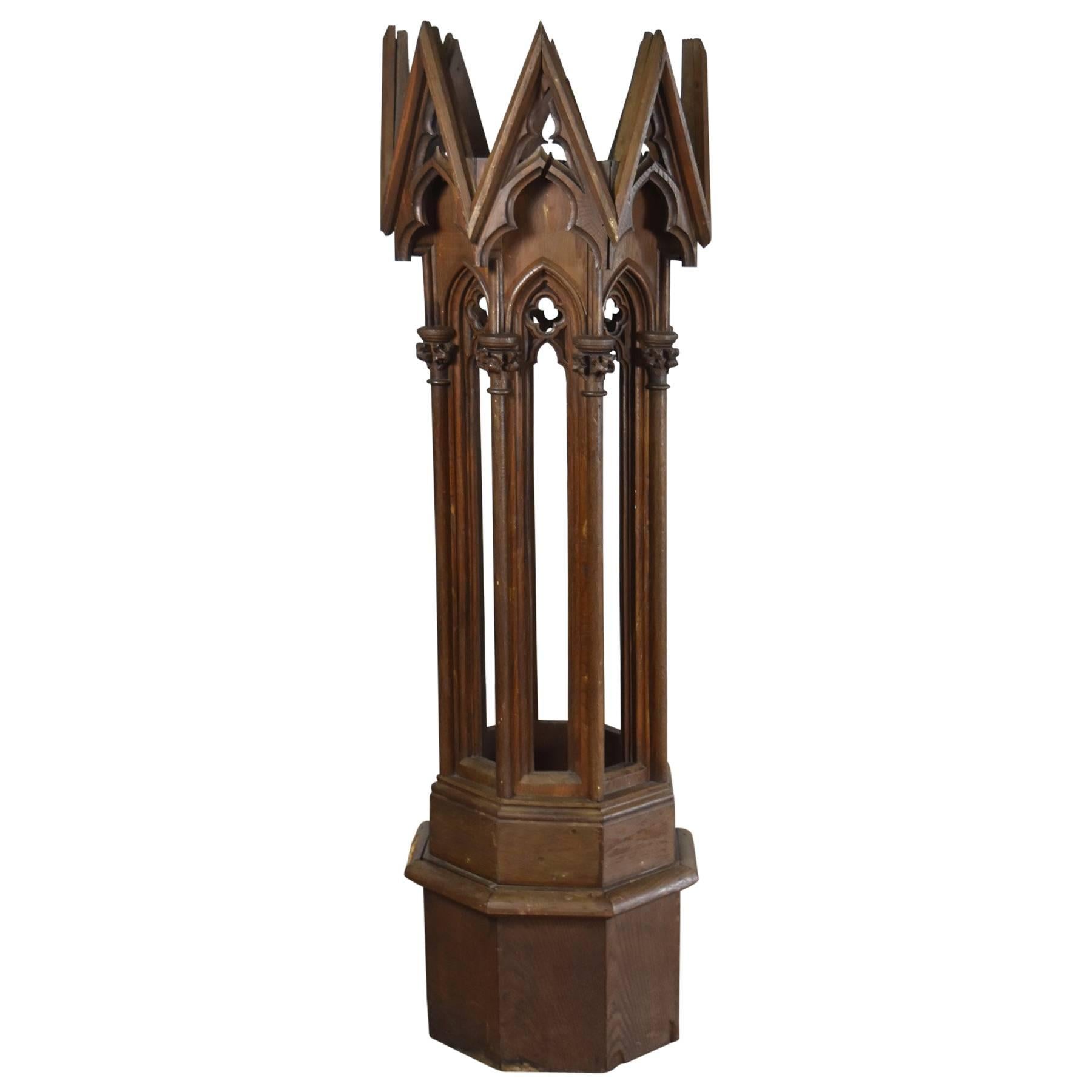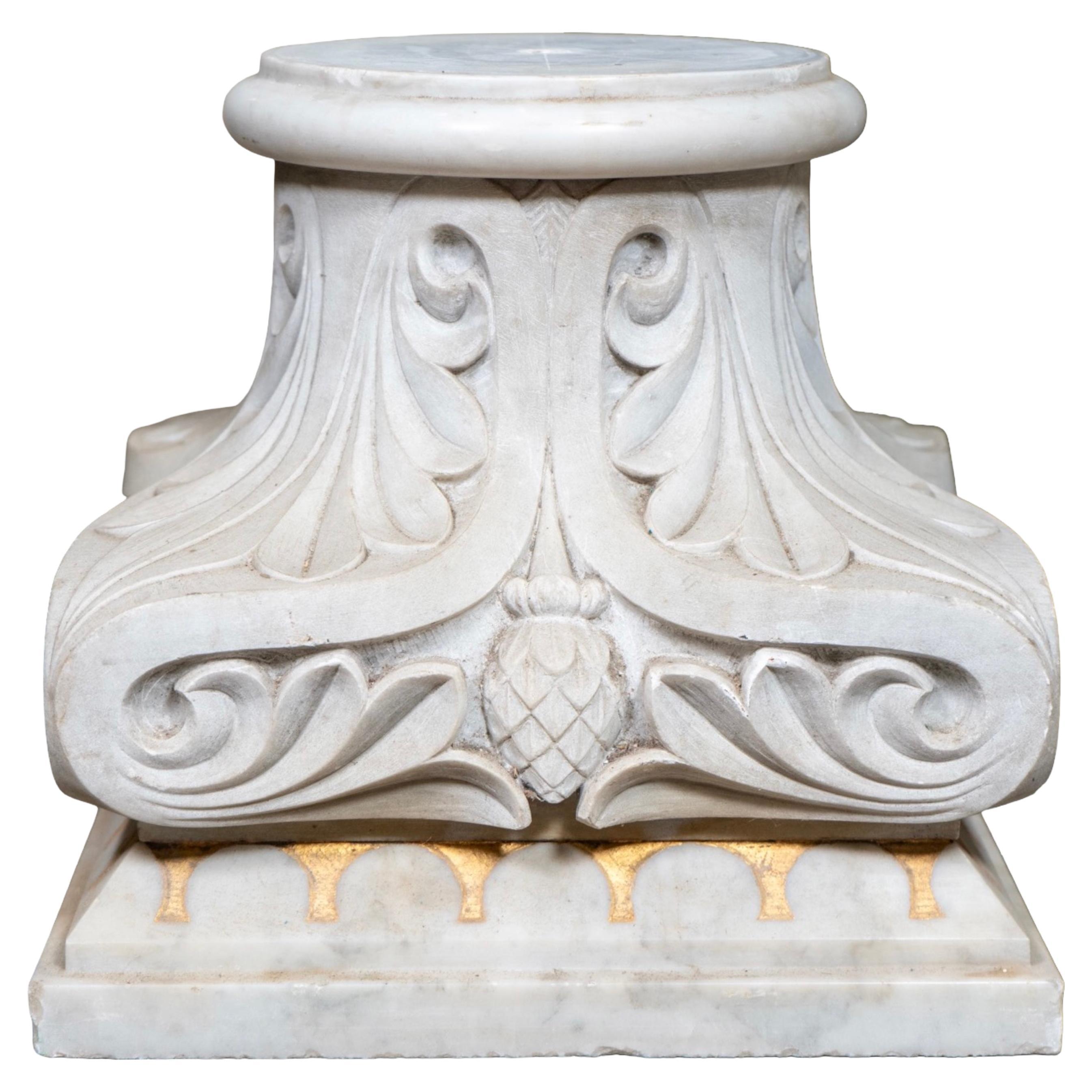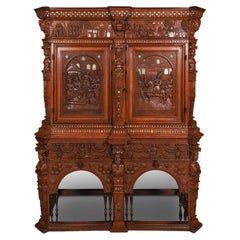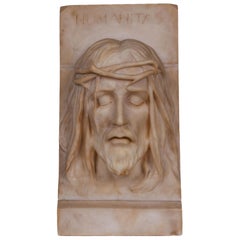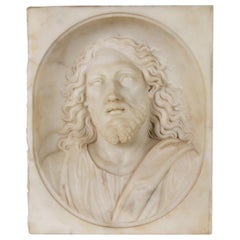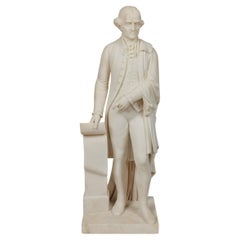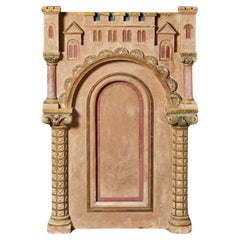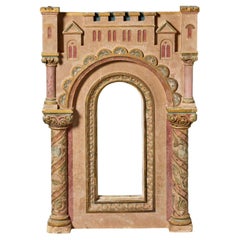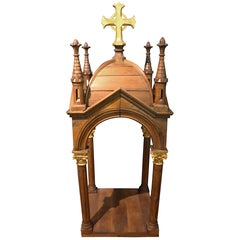Items Similar to Rare Monumental Italian Carved Carrara Marble Model of a Cathedral
Video Loading
Want more images or videos?
Request additional images or videos from the seller
1 of 7
Rare Monumental Italian Carved Carrara Marble Model of a Cathedral
$125,000
£95,042.45
€109,490.24
CA$177,717.15
A$193,147.97
CHF 102,071.15
MX$2,336,673.50
NOK 1,271,223.45
SEK 1,200,749.61
DKK 817,468.55
About the Item
A Rare and Monumental Italian Carved Carrara Marble Model of a Cathedral, Rome, 19th century, circa 1840.
Possibly a representation of Cathedral of Santa Maria del Fiore in Florence Italy.
The Italian Renaissance is renowned for its magnificent works of art and architecture, which are admired to this day for their grandeur and intricate details. Among the most impressive examples of this era are the rare and monumental carved Carrara marble models of cathedrals. This masterpiece features a stepped cornice above a frieze of carved holly leaves, which leads to a Gothic arched door with elaborate tracery.
What sets this particular model apart is the brass scarcity door that is enclosed by the tracery paneling. The combination of the Carrara marble and brass creates a striking contrast that highlights the exquisite craftsmanship of the artists who created this piece. The use of marble is particularly notable because it was a prized material during the Renaissance and was often reserved for the wealthiest patrons.
The intricate carvings on the frieze and the door are also noteworthy. The holly leaves on the frieze are finely detailed, with each leaf carefully carved to create a sense of depth and texture. The Gothic arched door features elaborate tracery that is both intricate and delicate, with the brass paneling adding an extra layer of detail and sophistication.
This Carrara marble model is a testament to the skill and creativity of the Renaissance artists who produced such magnificent works. The attention to detail and the use of high-quality materials such as marble and brass demonstrate a commitment to excellence that is characteristic of the era.
The model also serves as a valuable historical artifact, providing insight into the architectural styles and design sensibilities of the Renaissance. The Gothic arches and tracery are typical of the period, while the use of holly leaves as a decorative element is a nod to the naturalistic motifs that were popular at the time.
An exquisite piece of art that showcases the finest craftsmanship of Italian sculptors. The use of Carrara marble in the creation of this realistic model adds to its magnificence and makes it a sight to behold. The intricate details and fine textures of the marble allow for an incredibly lifelike representation of the cathedral to be carved.
The skill required to carve a model of a cathedral from Carrara marble is immense. The sculptor must have a deep understanding of the building's architecture and be able to translate it into three-dimensional form. The smallest details must be carefully crafted, from the intricate carvings on the façade to the delicate buttresses and flying buttresses that support the structure.
42" high x 29" wide x 6" deep.
In overall very good condition, presents extremely well. Top rail and base with minuscule chips.
- Dimensions:Height: 42 in (106.68 cm)Width: 29 in (73.66 cm)Depth: 6 in (15.24 cm)
- Style:Gothic (In the Style Of)
- Materials and Techniques:
- Place of Origin:
- Period:
- Date of Manufacture:19th Century
- Condition:Wear consistent with age and use.
- Seller Location:Queens, NY
- Reference Number:1stDibs: LU1798234076872
About the Seller
5.0
Vetted Professional Seller
Every seller passes strict standards for authenticity and reliability
Established in 1980
1stDibs seller since 2016
63 sales on 1stDibs
Typical response time: 1 hour
- ShippingRetrieving quote...Shipping from: Queens, NY
- Return Policy
Authenticity Guarantee
In the unlikely event there’s an issue with an item’s authenticity, contact us within 1 year for a full refund. DetailsMoney-Back Guarantee
If your item is not as described, is damaged in transit, or does not arrive, contact us within 7 days for a full refund. Details24-Hour Cancellation
You have a 24-hour grace period in which to reconsider your purchase, with no questions asked.Vetted Professional Sellers
Our world-class sellers must adhere to strict standards for service and quality, maintaining the integrity of our listings.Price-Match Guarantee
If you find that a seller listed the same item for a lower price elsewhere, we’ll match it.Trusted Global Delivery
Our best-in-class carrier network provides specialized shipping options worldwide, including custom delivery.More From This Seller
View AllRare and Important Renaissance "Judaica" Carved Oak Wood Cabinet
Located in Queens, NY
A Rare and Important Renaissance "Judaica" Carved Oak Wood Cabinet, circa 1680
We are pleased to present a rare and important Renaissance Judaica c...
Category
Antique 17th Century German Renaissance Cabinets
Materials
Mother-of-Pearl, Oak
Rare and Important Italian Alabaster Bust Sculpture of Jesus Christ, C. 1860
Located in Queens, NY
A rare and important Italian alabaster bust sculpture of Jesus Christ, C. 1860
A modeled bust of Holy Christ wearing a crown of thorns, excep...
Category
Antique 19th Century Italian Baroque Busts
Materials
Alabaster
Rare and Important Italian White Marble Bust Sculpture of Jesus Christ, C. 1850
Located in Queens, NY
Rare and important Italian white marble bust sculpture of Jesus Christ, C. 1850.
A truly exceptionally carved marble relief of Holy Jesus Christ. ...
Category
Antique 19th Century Italian Renaissance Busts
Materials
Marble
A Rare and Important American Marble Sculpture of Thomas Jefferson, Circa 1870
Located in Queens, NY
A Rare and Important American White Marble Sculpture of Thomas Jefferson Holding The Declaration of Independence. Circa 1870, in the Manner of Horatio Stone (1808 –1875).
Inscribed on scroll: 'The Declaration of Independence, It becomes necessary for one people to dissolve the political bands which have connected them with another. etc. etc. T. Jefferson.
The present work is unsigned but is reminiscent of Horatio Stone's life-size marble figure of John Hancock...
Category
Antique 19th Century American American Classical Figurative Sculptures
Materials
Marble
Rare & Important Spanish Damascene, Iron, Steel, Gold Inlaid Clock, Eibar, Spain
By Plácido Zuloaga 1
Located in Queens, NY
A highly rare and important Spanish damascene, "Egyptian Revival" iron, steel, gold, and silver inlaid clock,
circa 1900
Exceptional quality, damascened in gold and silver inlay.
Measures: 10" high x 16" wide x 9" deep.
Definitely made by one of Placido Zuloaga...
Category
Early 20th Century Spanish Egyptian Revival Mantel Clocks
Materials
Steel, Iron
Exceptional White Marble Figural Sculpture Clock, "Nubian Slaying the Lion"
Located in Queens, NY
An exceptional and monumental white marble figural sculpture clock, "A Nubian Slaying The Lion" by Jean-Joseph Jacquet (Belgian, 1822–1898), c...
Category
Antique 19th Century Belgian Figurative Sculptures
Materials
Marble
You May Also Like
Painted French Caen Stone Architectural Model
Located in Wormelow, Herefordshire
A vibrantly painted antique Caen stone architectural model. Dating from the mid 19th century, this limestone model came from a French church destroyed during WWII. With its arched design and ornately carved columns, it is reminiscent of blind arcades found in historic ecclesiastical and gothic architecture. Detailed to the top with castellations, this antique architectural model...
Category
Antique Mid-19th Century Victorian Architectural Models
Materials
Stone, Limestone
Painted Antique Caen Stone Architectural Model
Located in Wormelow, Herefordshire
A vibrantly painted antique Caen stone architectural model. Dating from the mid 19th century, this limestone model came from a French church destroyed during WWII. With its arched design and ornately carved columns, it is reminiscent of open arcades found in historic ecclesiastical and gothic architecture. Detailed to the top with castellations, this antique architectural model...
Category
Antique Mid-19th Century French Victorian Abstract Sculptures
Materials
Stone, Limestone
Circa 1880 French Gothic Style Baldachin or Statuary Niche
Located in Chapel Hill, NC
Circa 1880 French Gothic style Baldachin or Statuary Niche. Derived from canopies for processions, the term has come to signify all such coverings, most famously the Bernini high alt...
Category
Antique 1880s French Gothic Revival Religious Items
Materials
Gold Leaf
A French wooden neo-Gothic steeple with niche for saint statue, ca. 1800
Located in Meulebeke, BE
France / 1800 / Neo-Gothic steeple with niche for saint statue / wood / Neo-Gothic / 19t century
A very rare and large antique Neo-Gothic church steeple with niche for saint statue....
Category
Antique Early 1800s French Gothic Revival Religious Items
Materials
Wood
Neo-Gothic 19th Century Octagonal Pedestal / Stand / Architectural Model
Located in Troy, NY
An unusual pedestal of octagonal Neo-Gothic form, the molded base supporting eight shaped and carved columns decorated with typical Gothic designs, topped by eight spikes surrounding...
Category
Antique Mid-19th Century English Gothic Revival Pedestals
Materials
Oak
Antique Italian Marble Base
Located in Dallas, TX
Hand-carved in Italy during the 19th century, this antique marble base features elegant acanthus leaf scrollwork and a central pinecone motif on each side, symbols of classical desig...
Category
Antique 19th Century Architectural Elements
Materials
Marble, Gold Leaf
More Ways To Browse
Antique Arched Door
Gothic Arch
Italian Gothic
Italian Gothic Furniture
Antique Gothic Door
Marble Rome
Gothic Tracery
Santa Maria Del Fiore
Arched Gothic Door
Cathedral Model
Italian Font
Vintage Bell Box
Wood Pilaster
Architectural Glass Panels
French Wood Fragments
Garden Font
Gargoyles Garden
Used Fireplace Doors
